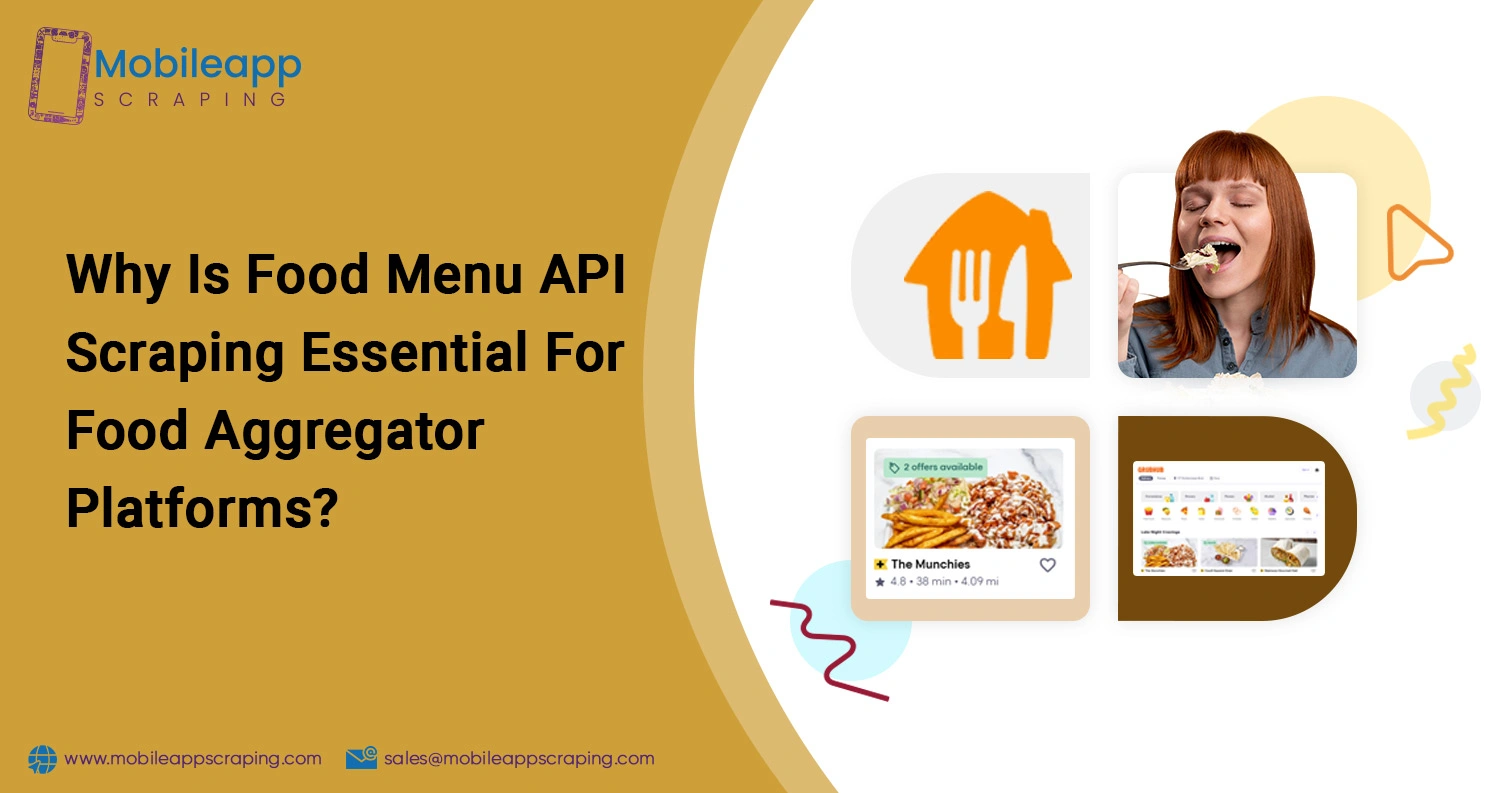
Why Is Food Menu API Scraping Essential For Food Aggregator Platforms?
Introduction
The modern food tech ecosystem has evolved rapidly, with food aggregator platforms now central to the digital dining experience. These platforms link millions of users to restaurants daily, relying on vast datasets to manage menus, pricing, and operational details. For businesses, it’s essential to Scrape Restaurant Menu Data From Grubhub and other aggregators to access structured insights and maintain a competitive edge in this data-driven environment.
At the heart of this ecosystem lies Food Menu API Scraping, a critical technology that enables food aggregator platforms to maintain accurate, up-to-date, and comprehensive restaurant databases. This technology has become indispensable for platforms that provide superior user experiences while maintaining competitive advantages in the crowded food delivery market.
The Evolution of Food Data Management
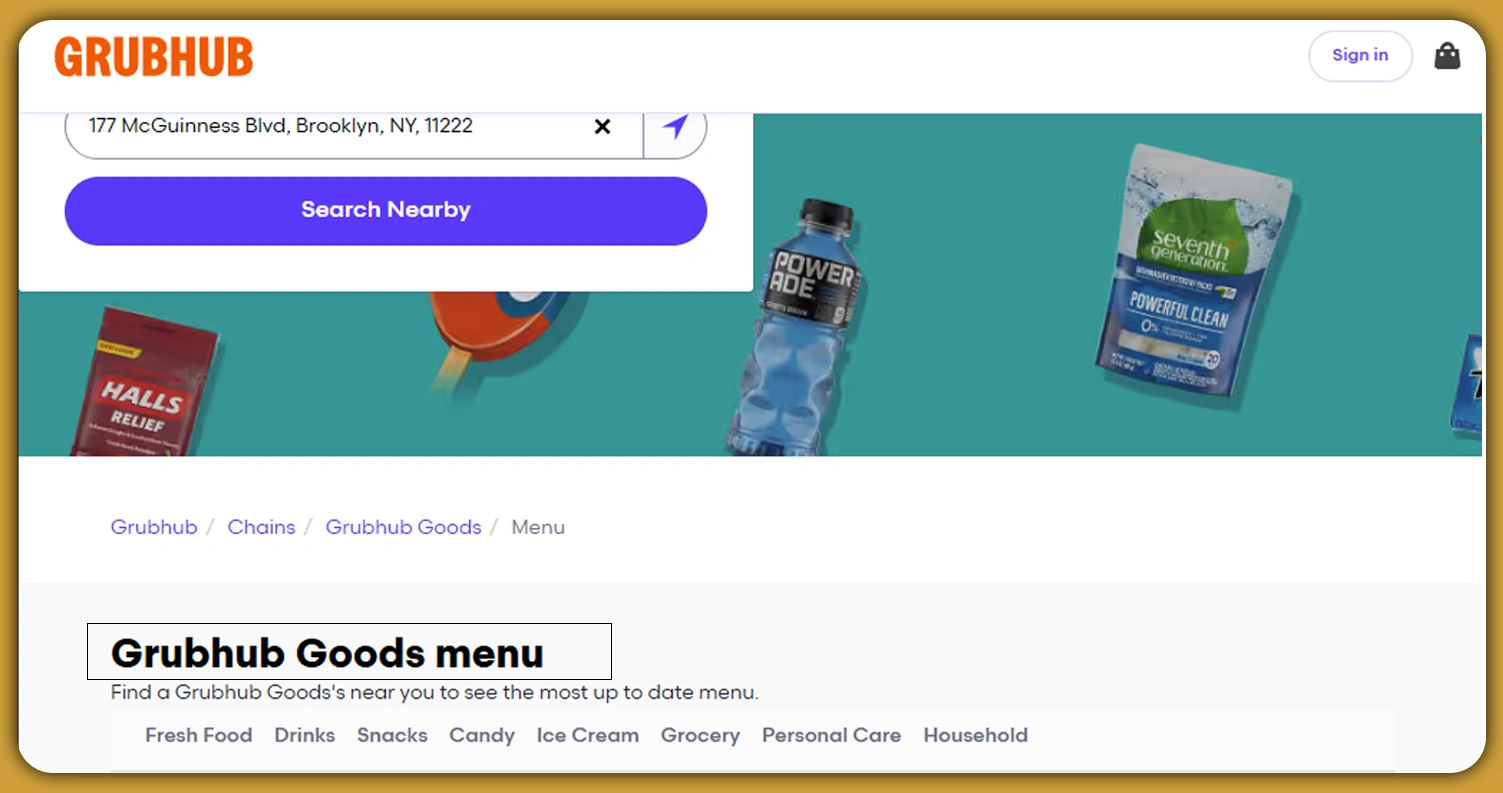
Food aggregator platforms initially populated their databases with manual data entry and restaurant partnerships. This approach proved inefficient and error-prone, leading to outdated menu information, incorrect pricing, and poor customer experiences. The need for automated, reliable data collection methods became apparent as platforms scaled their operations.
Modern food platforms depend on sophisticated Restaurant Menu Data Extraction techniques to maintain competitive databases. These systems can simultaneously process thousands of restaurant menus, ensuring that customers always have access to current offerings and accurate pricing information.
The integration of automated data collection has revolutionized how food platforms operate, enabling them to:
- Scale operations without proportional increases in manual labor
- Maintain data accuracy across thousands of restaurant partners
- Respond quickly to menu changes and pricing updates
- Provide comprehensive coverage of local dining options
Understanding Food Menu API Scraping Technology
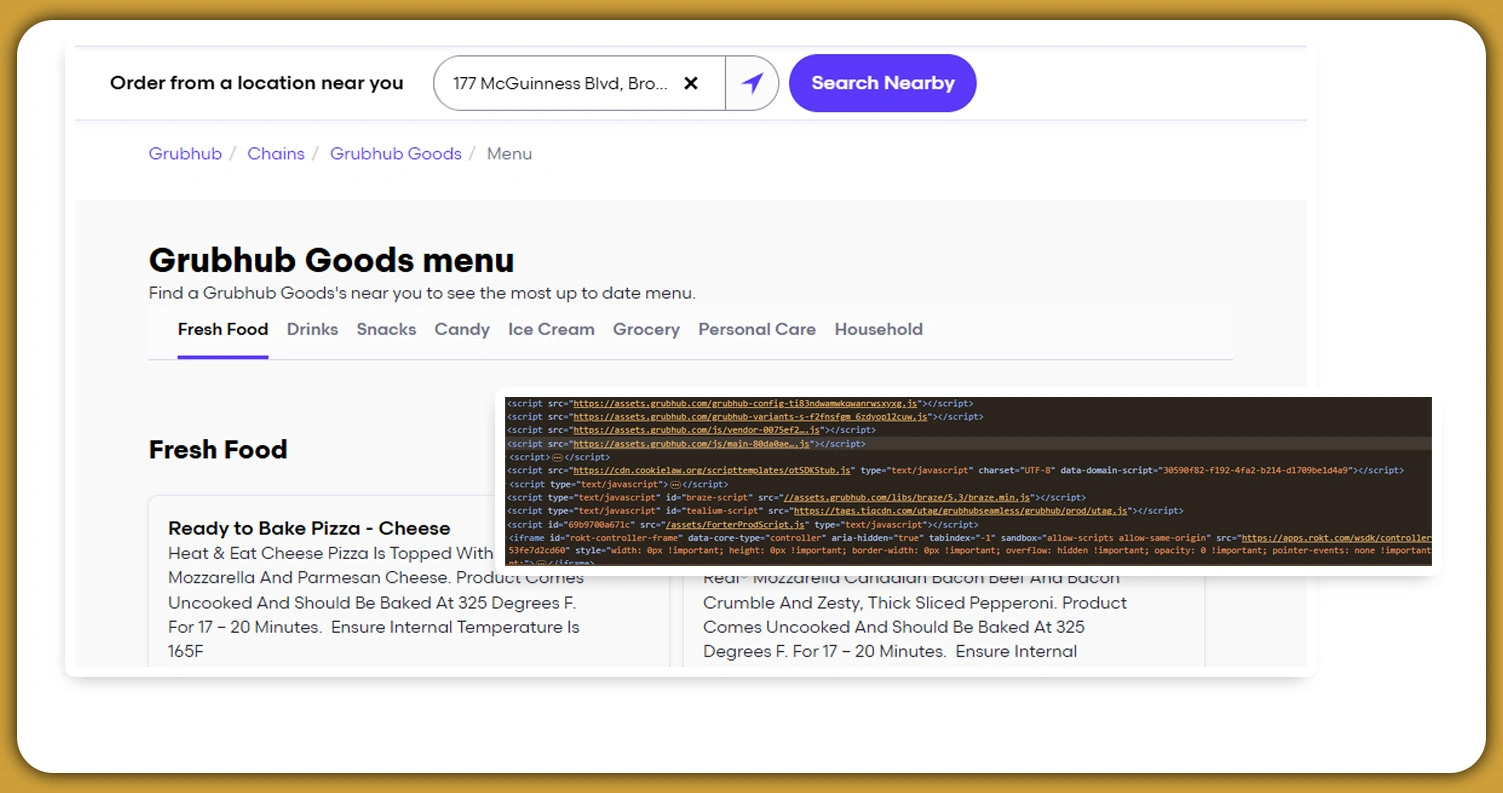
Food Menu API Scraping represents a sophisticated approach to data collection that leverages application programming interfaces (APIs) to extract structured restaurant data. API scraping provides more reliable, structured, and legally compliant access to restaurant information than traditional web scraping methods.
This technology connects with restaurant management systems, point-of-sale platforms, and aggregator databases. The process involves authenticating access, requesting specific data sets, and parsing the returned information into usable formats for food platforms.
The benefits of using Restaurant APIs For Menu Data include:
- Higher data accuracy compared to traditional scraping methods
- Real-time synchronization with restaurant systems
- Structured data formats that integrate seamlessly with platform databases
- Reduced risk of legal complications through proper API usage
- Better reliability and consistency in data collection
Advanced Food Delivery Data Scraping systems can handle complex data structures, including nested menu categories, modifier options, allergen information, and dynamic pricing models. This comprehensive approach ensures that food platforms can provide detailed, accurate information to their users.
Real-Time Data Synchronization Challenges
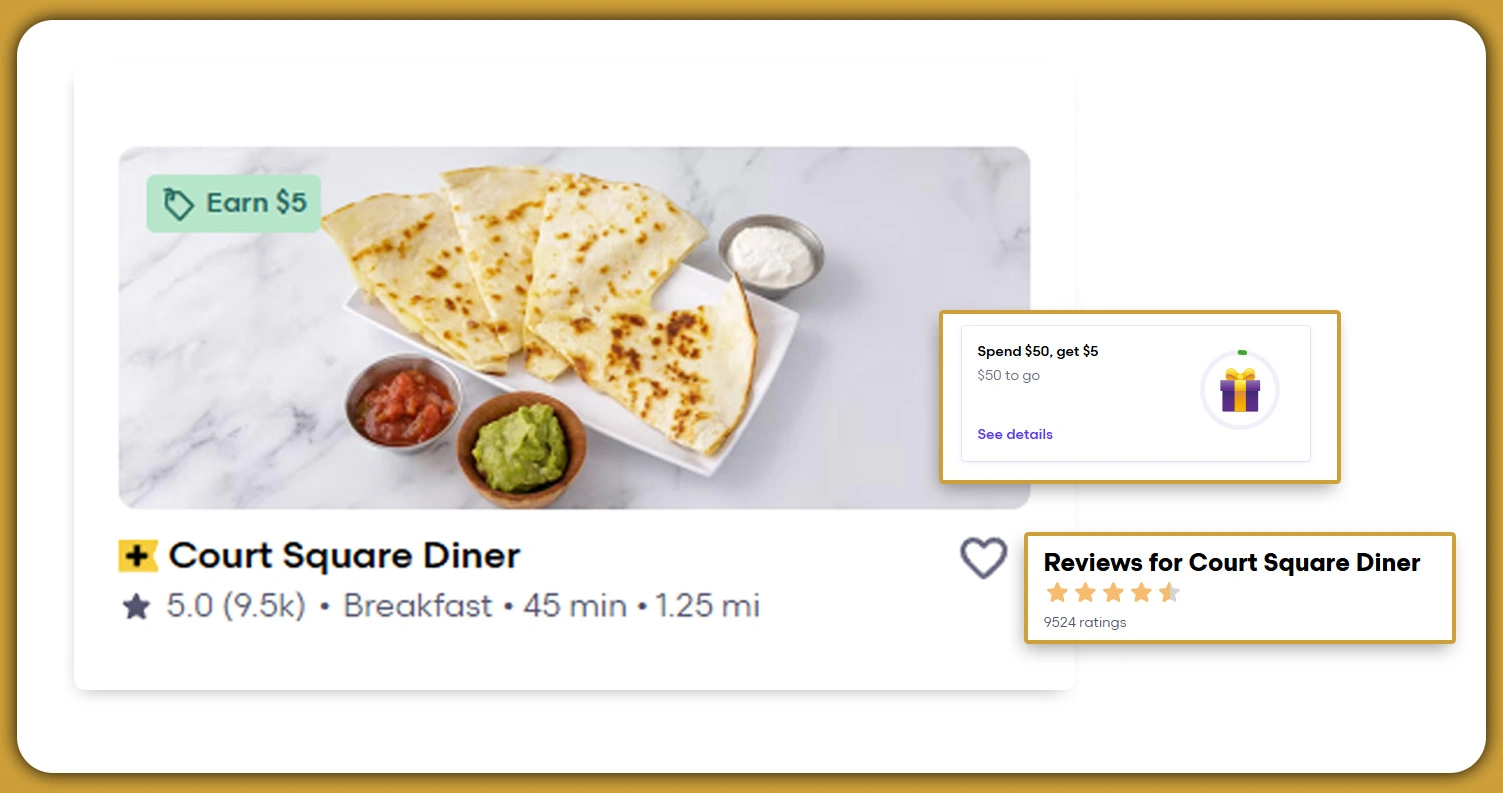
One of the most significant challenges facing food aggregator platforms is maintaining real-time synchronization with restaurant data. Menu items change frequently, prices fluctuate based on demand or supply costs, and availability varies throughout the day. Traditional data collection methods often result in lag times that negatively impact customer experiences.
The ability to Collect Real-Time Restaurant Menu And Pricing Data has become a competitive differentiator for successful food platforms. This capability requires sophisticated infrastructure to handle high-frequency data updates while maintaining system performance and reliability.
Key challenges in real-time data synchronization include:
- Managing API rate limits and throttling restrictions
- Handling data conflicts when multiple sources provide different information
- Ensuring data consistency across platform databases
- Maintaining system performance during peak update periods
- Implementing fallback mechanisms for API failures
Successful platforms implement robust data validation mechanisms that cross-reference information from multiple sources. This approach helps identify and resolve discrepancies quickly, ensuring that customers receive accurate information regardless of the data source.
Technical Implementation Strategies
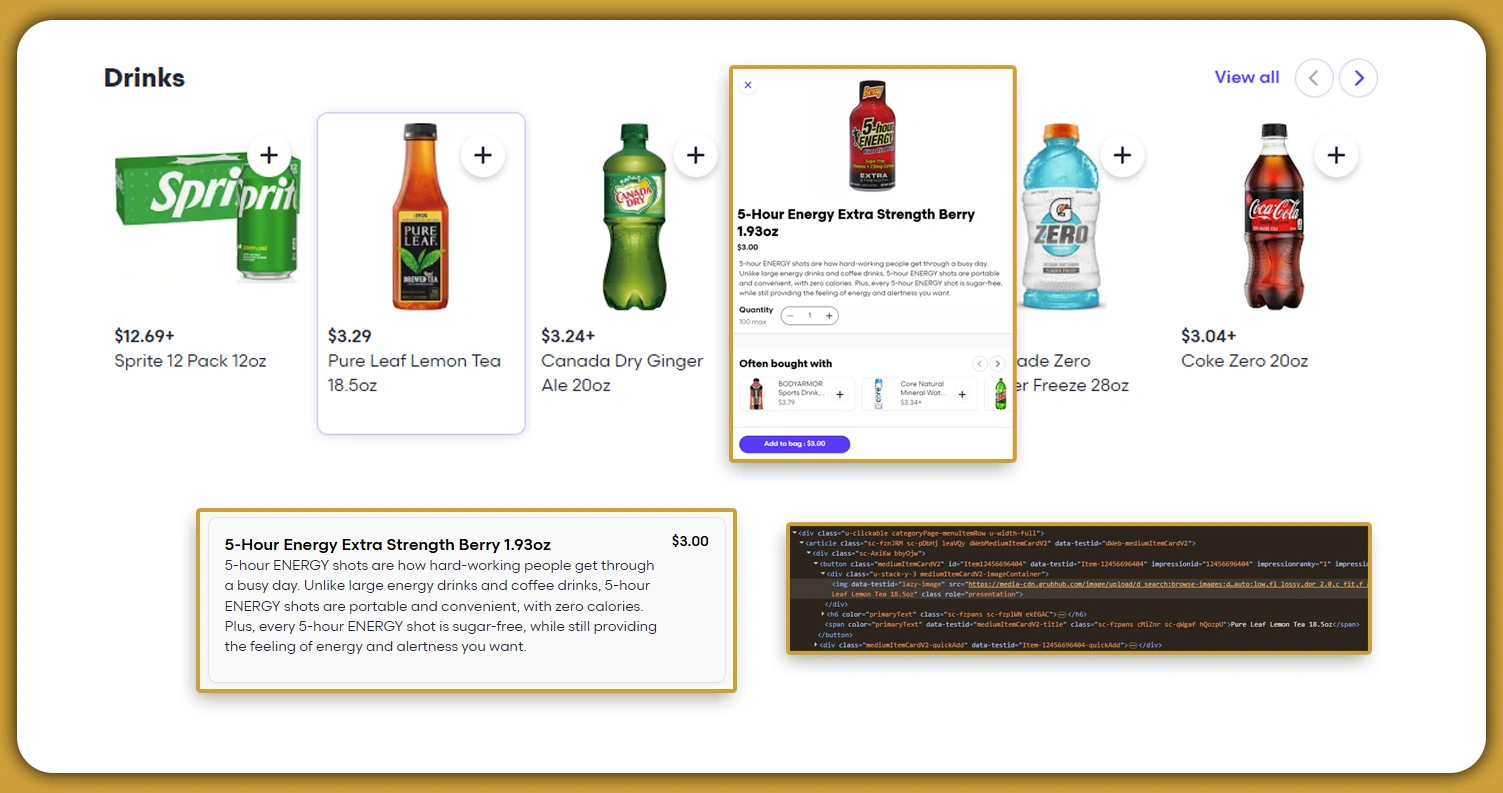
Implementing effective Food Menu API Scraping requires careful consideration of technical architecture, data processing capabilities, and integration requirements. Modern food platforms employ distributed systems that can handle massive data volumes while maintaining response times suitable for consumer applications.
The technical stack typically includes data extraction engines, processing pipelines, validation systems, and integration layers. Each component ensures that restaurant data flows seamlessly from source systems to customer-facing applications.
Platforms looking to Scrape Food Aggregator APIs must consider several technical factors:
- API authentication and authorization mechanisms
- Data parsing and transformation requirements
- Error handling and retry logic implementation
- Scalability considerations for handling growth
- Security measures to protect sensitive data
Advanced implementations incorporate machine learning algorithms that can identify patterns in menu changes, predict availability fluctuations, and optimize data collection schedules. These intelligent systems reduce unnecessary API calls while capturing critical updates promptly.
The ability to Extract Menu Item Descriptions And Prices via API requires sophisticated text processing capabilities. Natural language processing techniques help standardize menu descriptions, extract key information like allergens and ingredients, and identify promotional pricing structures.
Multi-Platform Integration Complexities
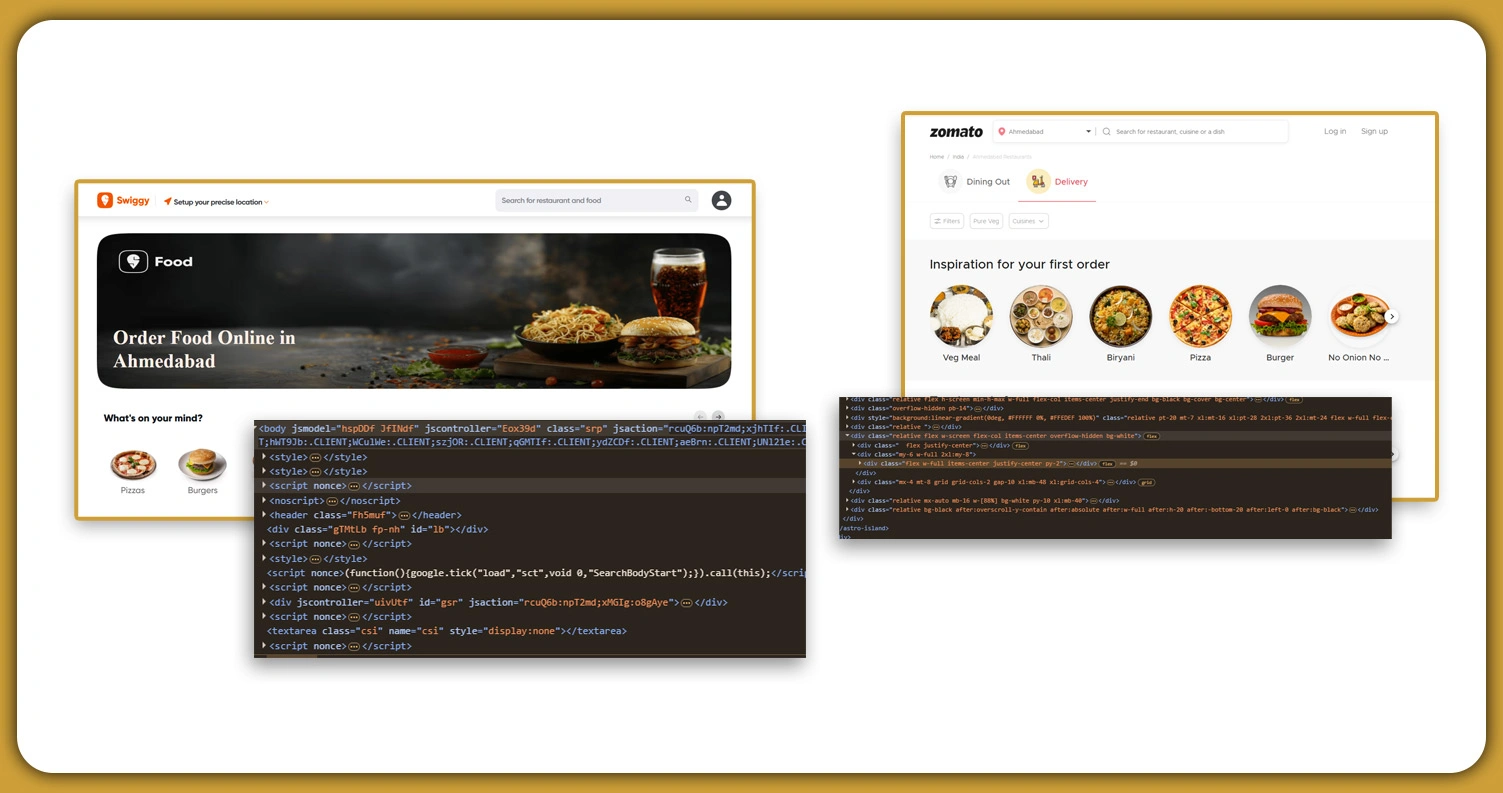
Food aggregator platforms often need to integrate data from multiple restaurant management systems, each with its API structure, authentication requirements, and data formats. This complexity requires flexible integration architectures that adapt to various data sources while maintaining consistent output formats.
Popular food delivery platforms have established comprehensive integration strategies to Scrape Swiggy, Zomato, And Uber Eats Menu APIs. These integrations require understanding each platform's API requirements, rate-limiting policies, and data structures.
Key considerations for multi-platform integration include:
- Standardizing data formats across different API sources
- Managing authentication credentials and access tokens
- Implementing platform-specific error-handling logic
- Coordinating data collection schedules to optimize resource usage
- Maintaining compliance with each platform's terms of service
Regional platforms also present unique challenges, such as the need to Scrape Pyszne Restaurants Menu Data for European operations. Each platform may use different data structures, languages, and business logic that must be accommodated in the integration architecture.
Business Impact and Competitive Advantages
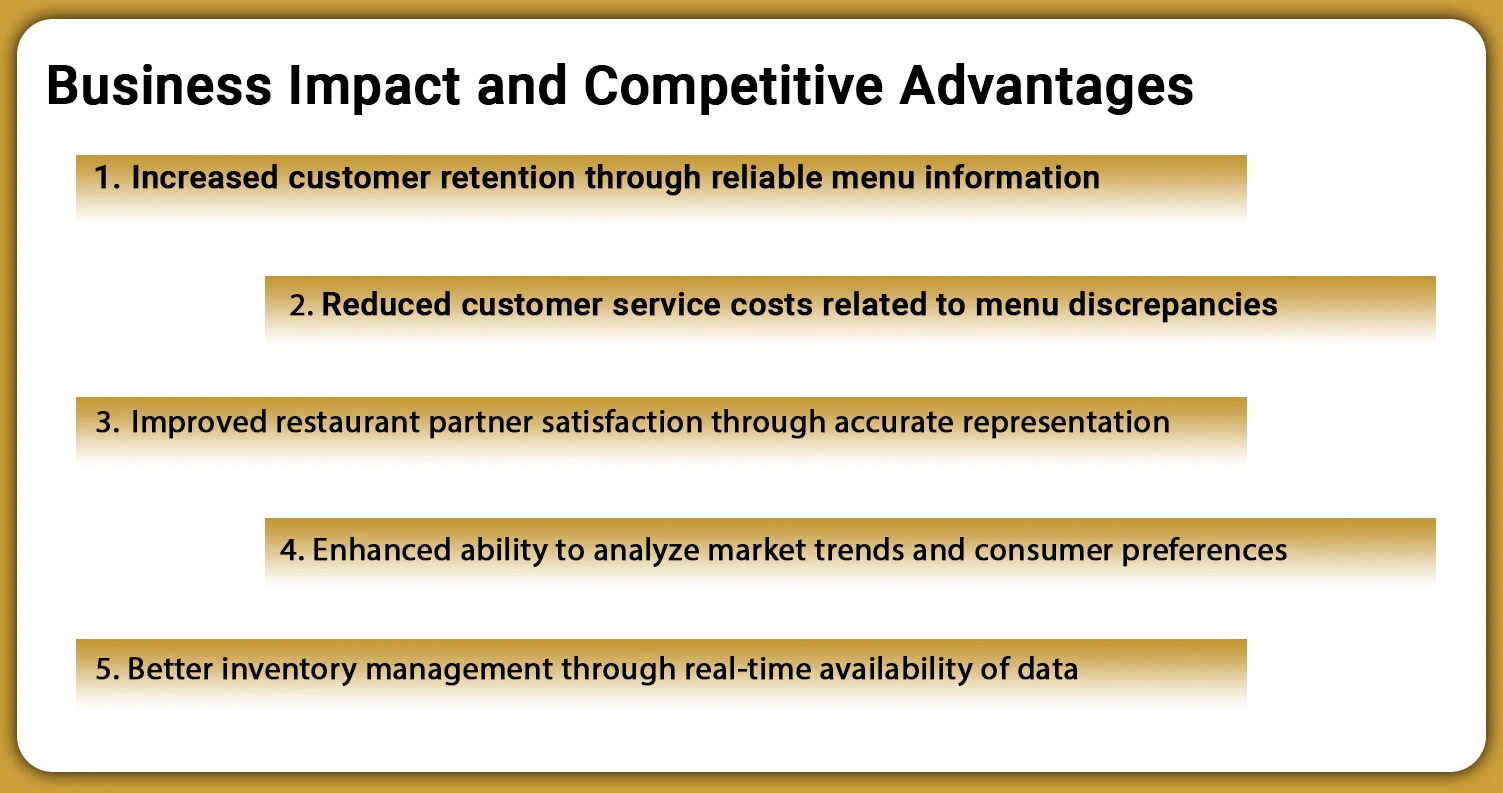
Implementing comprehensive Food Menu API Scraping systems provides measurable business advantages directly impacting platform success. These benefits extend beyond simple data collection to customer satisfaction, operational efficiency, and market positioning.
Platforms that can Effortlessly Collect Restaurant And Menu Data gain significant competitive advantages through improved customer experiences. Accurate, up-to-date menu information reduces customer complaints, increases order completion rates, and builds trust in the platform's reliability.
Business benefits include:
- Increased customer retention through reliable menu information
- Reduced customer service costs related to menu discrepancies
- Improved restaurant partner satisfaction through accurate representation
- Enhanced ability to analyze market trends and consumer preferences
- Better inventory management through real-time availability of data
The ability to Extract Restaurant App Data also enables platforms to conduct comprehensive market analysis, identify trending menu items, and optimize their platform features based on actual usage patterns. This data-driven approach supports strategic decision-making and helps platforms stay ahead of market trends.
Data Quality and Validation Processes
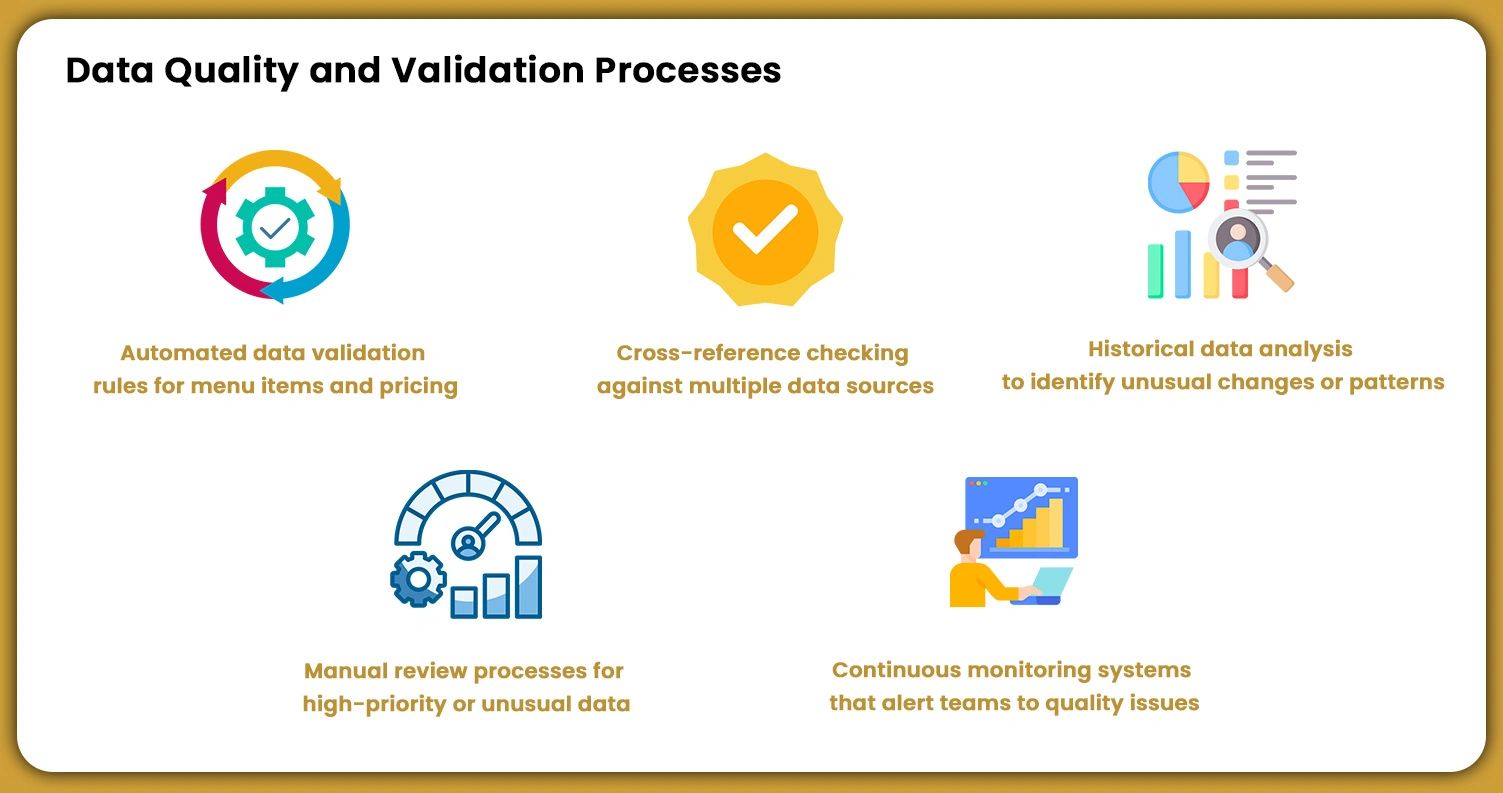
Maintaining high data quality standards is essential for food aggregator platforms. Poor data quality leads to customer dissatisfaction, increased support costs, and potential revenue loss. Comprehensive validation ensures that collected data meets platform standards and provides value to end users.
Effective data quality management involves multiple validation layers that check for completeness, accuracy, and consistency. These processes must be automated to handle the scale of modern food platforms while maintaining the flexibility to adapt to changing requirements.
Quality assurance processes typically include:
- Automated data validation rules for menu items and pricing
- Cross-reference checking against multiple data sources
- Historical data analysis to identify unusual changes or patterns
- Manual review processes for high-priority or unusual data
- Continuous monitoring systems that alert teams to quality issues
The ability to Scrape Food Menus From Aggregator Apps while maintaining data quality requires sophisticated validation logic that can identify and resolve common data issues. This includes handling duplicate entries, standardizing naming conventions, and validating pricing information against reasonable ranges.
Future Trends and Technological Developments
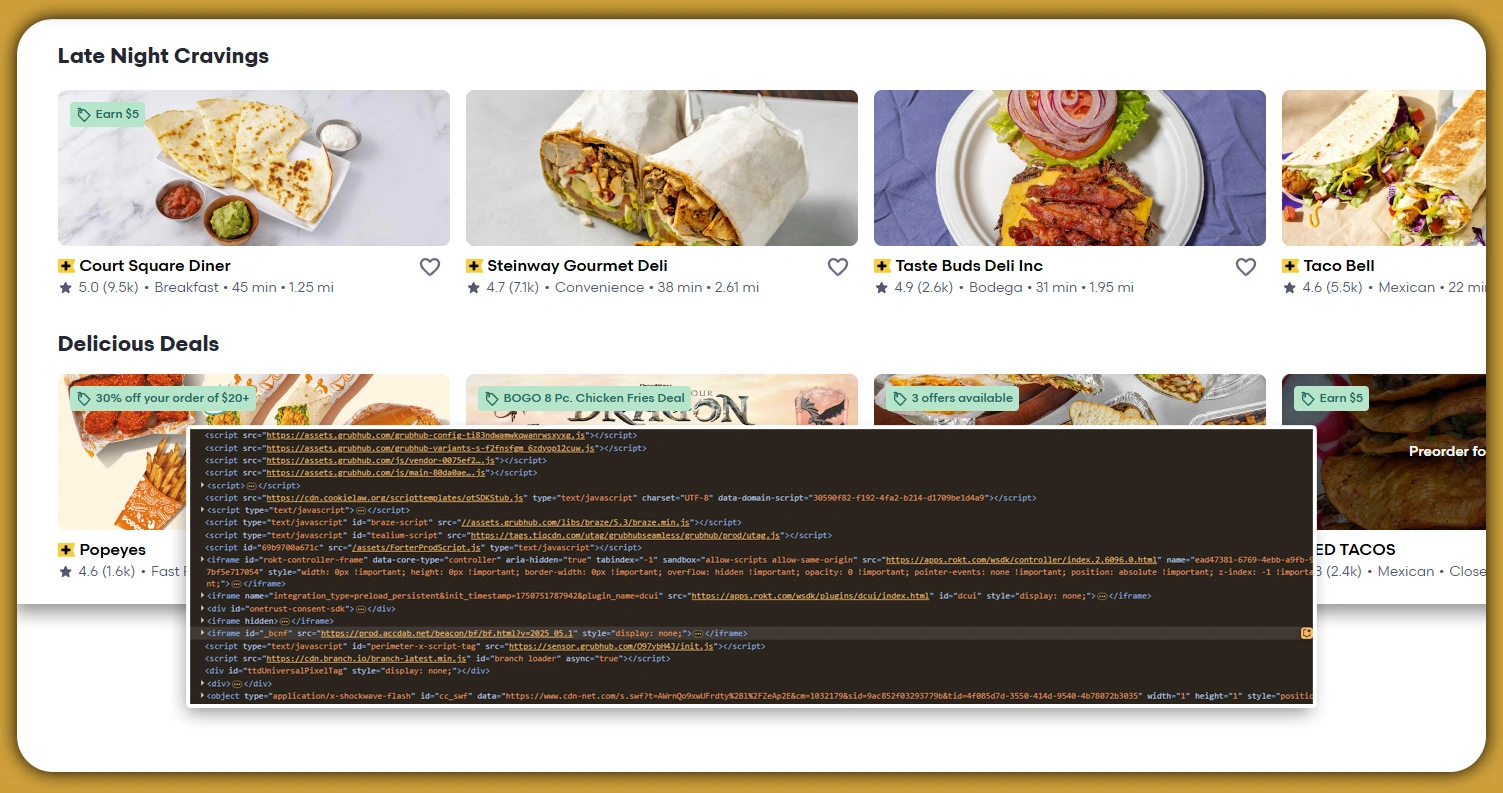
The food tech industry continues to evolve. Artificial intelligence and machine learning are increasingly integrated into data collection systems, enabling more intelligent and efficient data processing capabilities.
Future developments in Food Menu API Scraping technology will likely include enhanced natural language processing for menu description analysis, predictive analytics for availability forecasting, and improved integration capabilities for emerging restaurant technology platforms.
Emerging trends include:
- Integration with Internet of Things (IoT) devices for real-time inventory tracking
- Advanced image recognition for menu item visualization
- Blockchain technology for data authenticity verification
- Enhanced personalization capabilities based on collected data
- Improved privacy protection mechanisms for sensitive restaurant data
Platforms that stay ahead of these technological developments will be better positioned to provide superior customer experiences and maintain competitive advantages in the evolving food delivery market.
How Mobile App Scraping Can Help You?
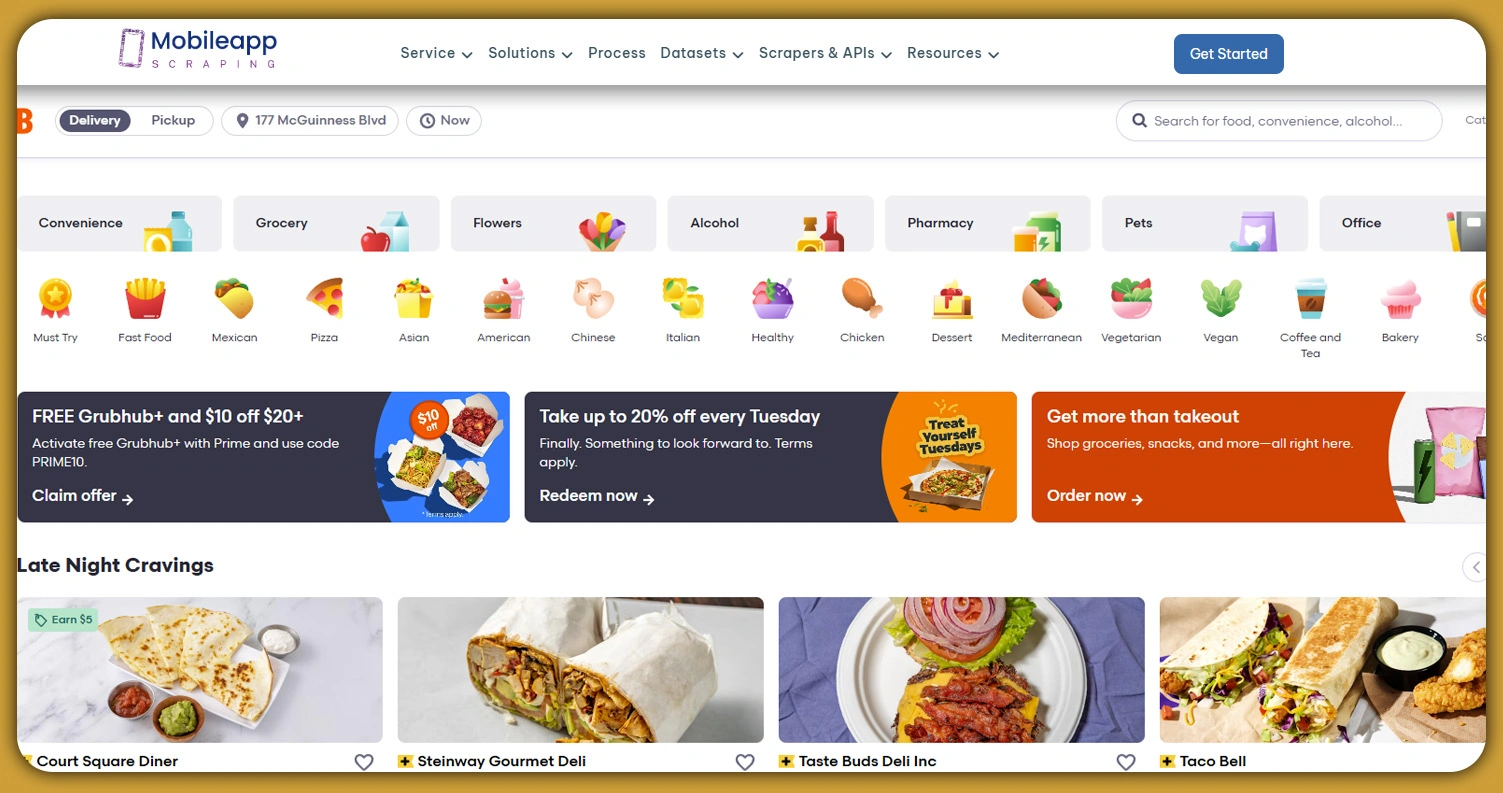
We specializes in providing comprehensive data extraction solutions for food aggregator platforms. Our Restaurant Menu Data Extraction expertise and advanced API integration technologies can help your platform achieve superior data quality and operational efficiency.
Our services include:
- Custom API integration solutions for major food delivery platforms
- Real-time data synchronization systems that ensure menu accuracy
- Scalable infrastructure designed to handle high-volume data processing
- Advanced data validation and quality assurance mechanisms
- Comprehensive support for multi-platform data integration projects
- Specialized solutions for regional platform requirements
We understand food aggregator platforms' unique challenges and provide tailored solutions that address specific business requirements. Our team of experts can help you implement robust data collection systems that support your platform's growth while maintaining the highest data quality and reliability standards.
Our approach focuses on delivering sustainable, scalable solutions that grow with your business. Whether you need to enhance existing data collection capabilities or implement comprehensive new systems, we provide the expertise and technology necessary for success.
Conclusion
In today’s fast-paced food delivery landscape, delivering accurate and real-time menu data is vital for enhancing customer trust and engagement. That’s where Food Menu API Scraping becomes a critical component, empowering food aggregator platforms to maintain consistency, scale seamlessly, and improve service quality across regions.
Modern strategies to Extract Restaurant App Data are no longer limited to basic scraping—they now support intelligent decision-making by feeding platforms with granular insights into dishes, pricing, availability, and customer preferences, strengthening their operational frameworks.
For platforms aiming to elevate performance, working with specialists like us offers the technical edge to Scrape Food Aggregator APIs efficiently and reliably. Contact Mobile App Scraping to explore how our solutions can empower your growth in the fast-paced food tech landscape.

